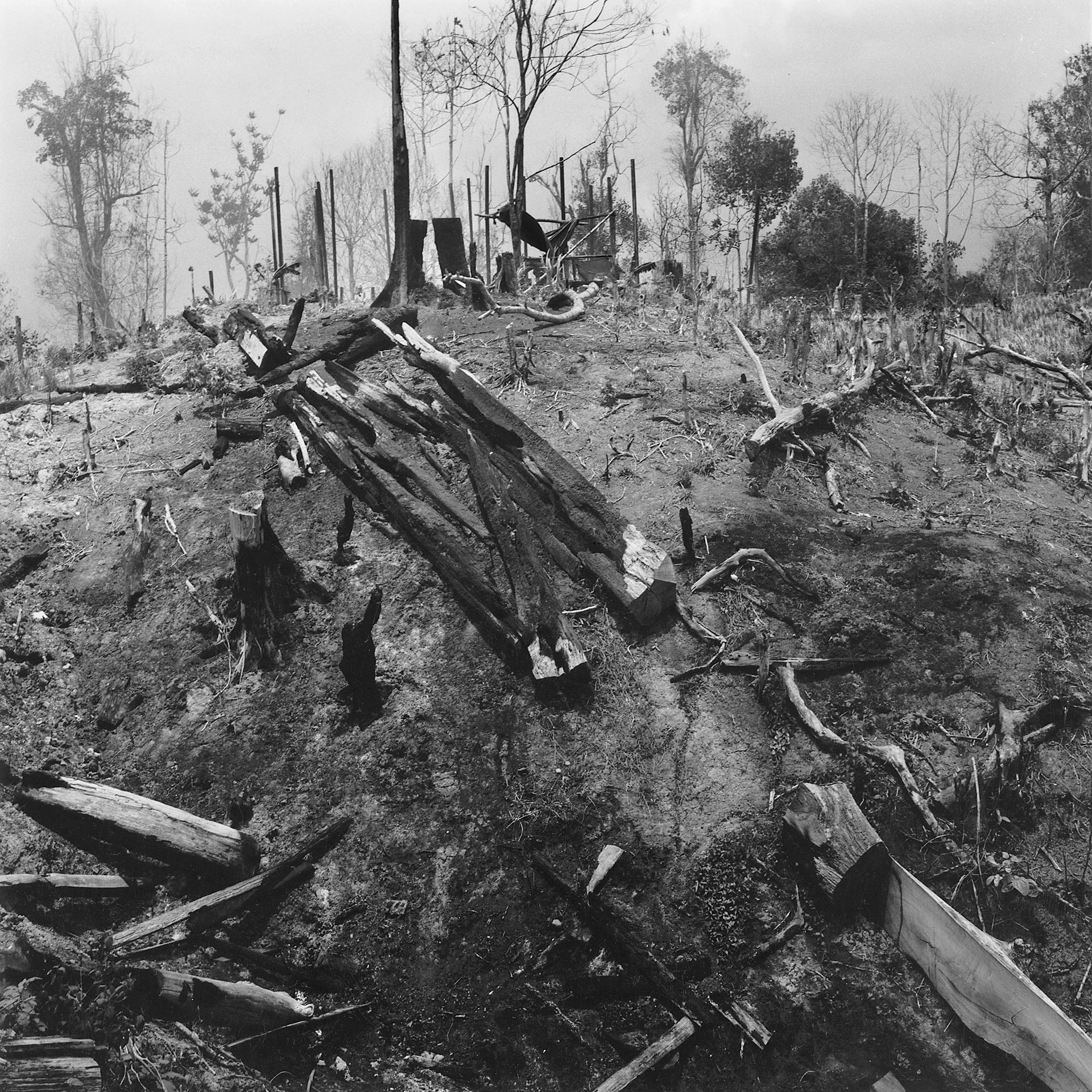1998–1999
Borneo – Destruction Business
1998 was the year of a global bonfire. Kalimantan, the Indonesian part of Borneo, was one of the greatest contributors and with an area of 7,700 sq.mi. (20,000 sq.km) of burnt forest the source of the so-called “haze” which for many months made it tough for some 70 million people across Southeast Asia to breathe. The El Nino effect alone was too easy an explanation. Even without this notorious weather system, which floods some regions while producing horrendous drought in others, forests had become increasingly vulnerable. The blame lay with human activity: People were literally paving the way for the fire’s intrusion.
“The sun had stopped shining on Borneo. The monsoon rains had evaporated before they reached the ground. The largest island in the archipelago lay wreathed in thick smoke. In Sarawak, Bandar Seri Bagawan, and beyond the sea in Singapore and on Sumatra the children wore protective masks. Under the blanket of smoke, the brown coal deposits were burning underground, setting fire to the roots of the last ironwood trees of the rain forest. The trees were still standing while their insides turned to carbon. The fires, nurtured by the peat soil of Kalimantan’s marshy regions, were hard to locate and almost impossible to extinguish – but not because the satellites orbiting the earth at the Equator couldn’t pinpoint them through the smoke. The fire spread all along the woodcutters’ roads which led to the illegal palm oil and banana plantations, on which the transmigrants from Flores and Sulawesi depended, and through the rubbish dumps of the boom towns, deep into the very heart of the island.
There, right beneath the Equator, the satellite dishes on the long houses were turned up towards the invisible sky. The muezzin’s call to evening prayers was cut short by coughing. A few months earlier the Dyaks had attacked Madurese transmigrants because their domestic animals had been grazing on holy sites. And now these descendants of headhunters, their fighting cocks in their arms, stood between the scorched market stalls and the skeletons of the rubber trees. They peered red-eyed through the slits in their woollen caps at the trucks taking the hardwood to the eroding landing-stages on the Mahakan, or at the buses carrying the workers from Sulawesi, on the other side of the Makassar Strait, to the goldmine with steel gates belonging to a multinational company where Indonesian soldiers prevented trespassing. Absolutely everything was in a state of total confusion.”
(Excerpt from “One World, or Something of that Sort,” in Tales from a Globalizing World, Daniel Schwartz, ed., Thames & Hudson, London 2003)
The reportages were commissioned and published by Neue Zürcher Zeitung, Zürich, and Facts, Zürich.
Assignments
- 2010–2018Afghanistan – Glacier Walks in Times of War
- 2012Burma Revisited
- 2009Swat – Mutilated Faces
- 2007Kazakhstan – Oil Great Game in Central Asia
- 2005Turkmenistan – A Journey under Surveillance
- 2004China – Farewell to Kashgar
- 2001–2010Afghanistan – A Thirty Years War
- 2001China – The Transformation of Xinjiang
- 2001Afghanistan – Drought and Famine
- 2000Kashmir – Paradise Lost
- 2000Ulanbataar – Children’s Underworld
- 2000London – Going Southwark
- 1999Indonesia – East Timor: Times of Agony
- 1998–1999Borneo – Destruction Business
- 1998Afghanistan – Economy of Survival
- 1997Cambodia – Quiet Days in Pailin
- 1996Tajikistan – Forbidden Badakshan
- 1995Iran – Roads to Isfahan
- 1994–the presentAngkor – The Mercy of Ruins
- 1994Bangladesh – Sandwip: An Island disappears into the Sea
- 1993Calcutta – Durga Puja
- 1992–1996Indochina – Legacies of War
- 1992Cambodia – Resurrecting a Country
- 1991–1992Burma – Behind the Bamboo Curtain
- 1990Ahmedabad – Cotton Mills
- 1987China – The Pulse of the Earth
- 1978–1980Greece – Lavrion Silver



